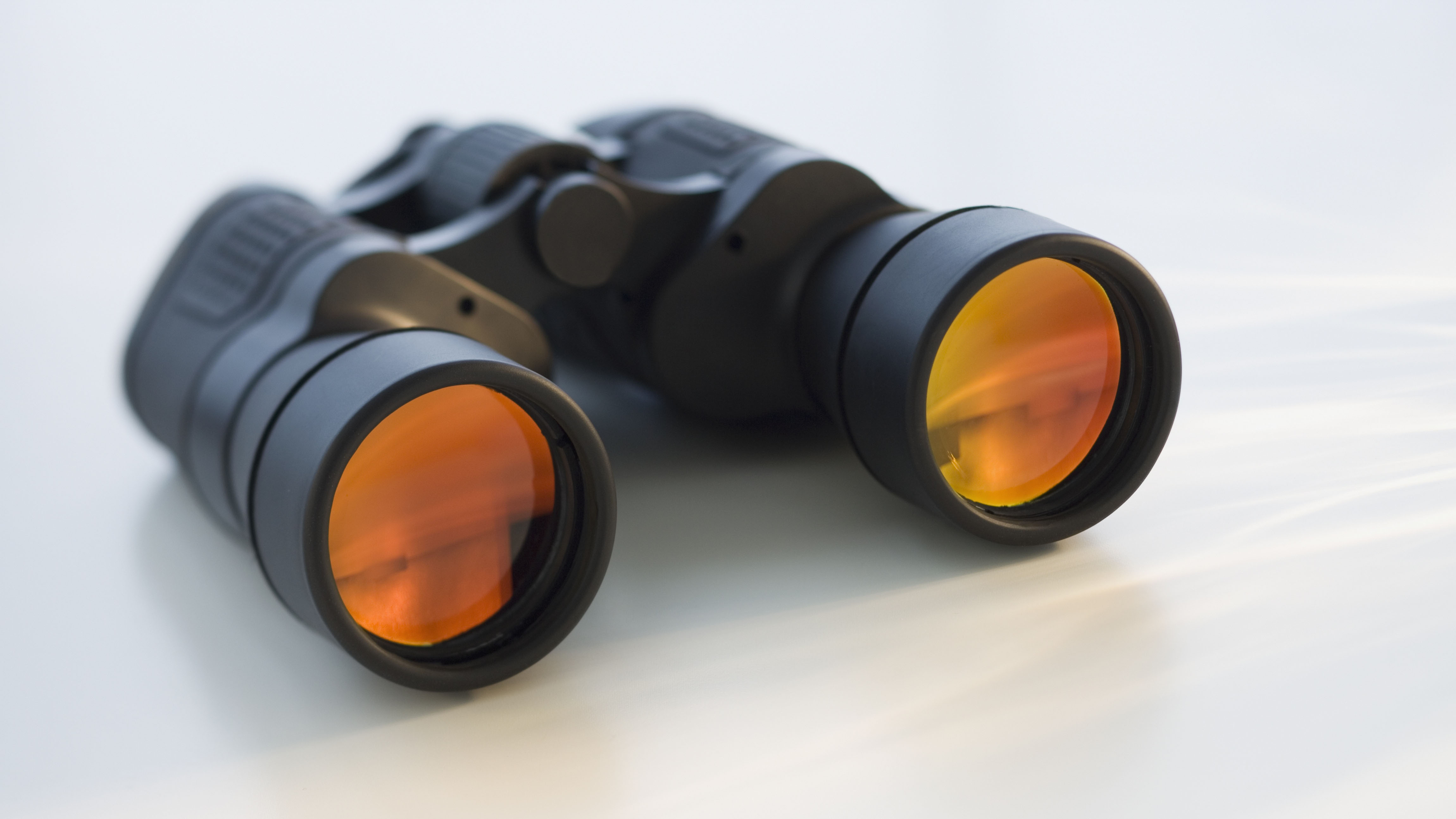How to clean binoculars properly without damaging the lenses
Here's our guide on how to clean binoculars properly, so you're well-prepared for the next stargazing event.

Learning how to clean binoculars is important if you want to keep them in good shape. Whether you've bought a pair from the bargain bin, or splurged astronomical amounts on some of the best binoculars around, you've made an investment worth protecting. That starts with keeping them, and especially their lens surfaces, clean.
The first step may seem obvious – try not to get them dirty in the first place. Lens caps can be fiddly, but they will protect your optics during transport and set-up. We don’t know why manufacturers nearly always colour their lens caps black, as this makes them especially easy to lose in the dark. It's also worth brushing up on how binoculars work, so you have a better understanding of why certain parts of them are so sensitive.
Smudges
When handling binoculars, avoid touching the lenses with your fingers. This will inevitably leave an oily smudge to spoil your view of the heavens. You may be tempted to simply polish this away, but be careful. Never use any kind of paper – not even soft tissue – on optical surfaces. Paper is surprisingly abrasive, and could damage the lens coatings.
Binocular and telescope lenses are coated with layers of chemicals to increase their transmission of light, reduce reflections, and cut out aberrations that create coloured fringes around bright objects. Modern coatings are pretty tough, but are still vulnerable to damage. Remember, they are the only thing between the outside world and the expensive precision glass inside. Damage the coating and you have damaged the lens, and therefore the binoculars.
Use a clean soft dry cloth, ideally a microfibre cloth which should not leave any traces of lint behind. If you see any dust or grit, remove this first (see below), and then wipe the cloth carefully over the lens. We recommend using a circular motion rather than up and down, because any tiny impressions left behind will be less likely to impair lens performance.
Lens cleaning fluids or impregnated wipes can be useful, and should evaporate without leaving a residue. If you're unsure, try using it on a window or drinking glass to see how effective it is, before applying to your precious binoculars. Never, ever use domestic window cleaning products!
Dirt, grit, and dust
These are your worst enemies when caring for binoculars and good quality telescopes, as they can easily scratch delicate optical surfaces – and this is most likely to happen when cleaning is performed.
Breaking space news, the latest updates on rocket launches, skywatching events and more!
The trick is to get rid of dust and grit without pressing it into the lens, which could cause scratches. The best way is by suction, but unless you happen to have a vacuum cleaner to hand this is probably impractical. A more useful approach is to use a puffer brush, consisting of a small rubber balloon with a soft brush attached. These are inexpensive and available from camera shops and online.
Holding the binoculars up, so the offending material can fall away, deliver a few puffs from a close distance. Follow with a couple of circular sweeps with the brush (puffing at the same time if necessary) and you will almost certainly have shifted any dry dust or dirt.
If you can't get hold of a puffer, a soft-bristle brush is the next best thing. A clean paintbrush or a make-up brush can be used, softer the better, but do make sure it is absolutely clean (preferably unused) or you might just make the problem worse.
Moisture and condensation
Do you have a little sachet of moisture absorber, probably silica gel, in your binocular case? Keep it there, it's doing a valuable job. While you've been out observing the skies, your binos will have cooled down. When you bring them back into the house, condensation can form on the cold surfaces including the lenses. This moisture will practically glue any passing mote of dust to your binoculars, and can also encourage fungal growth.
That's why it is a good idea to dry your binoculars before storing them. First allow them to come to room temperature, then wipe down with a soft dry cloth taking extra care with the optical surfaces. Store them in their case with the absorbent. Top tip: Silica gel can only absorb a certain amount of moisture, but can be recharged by drying it in a low oven for an hour or two.
Following these few simple steps will preserve the life and maintain the performance of your valuable optical investment.

Russ Swan is a UK-based freelance science writer and author with a love of all things related to space and aviation. He built his own 100mm refractor telescope from some bits found in a military surplus store, and once had lunch with Neil Armstrong. His popular science book The Physics Behind… explains not just how the universe works, but why. He tweets (occasionally)!
